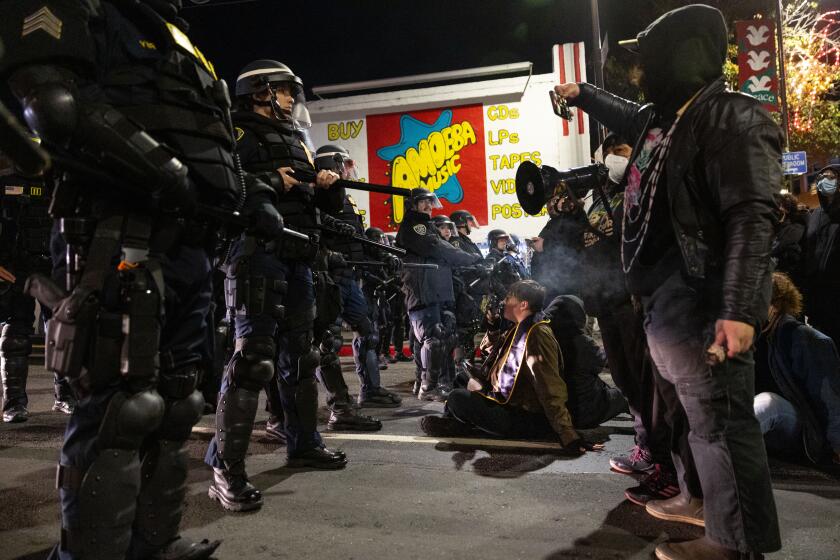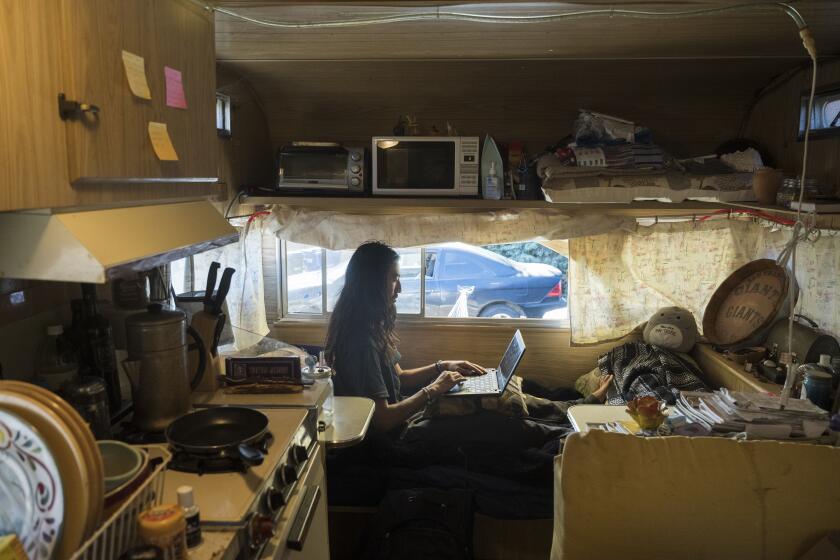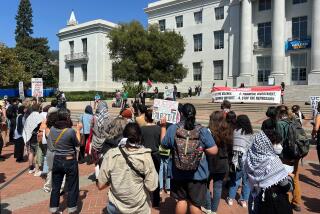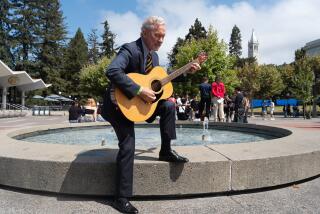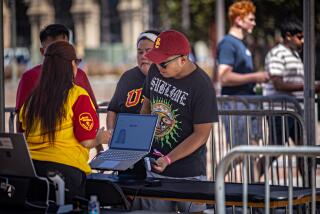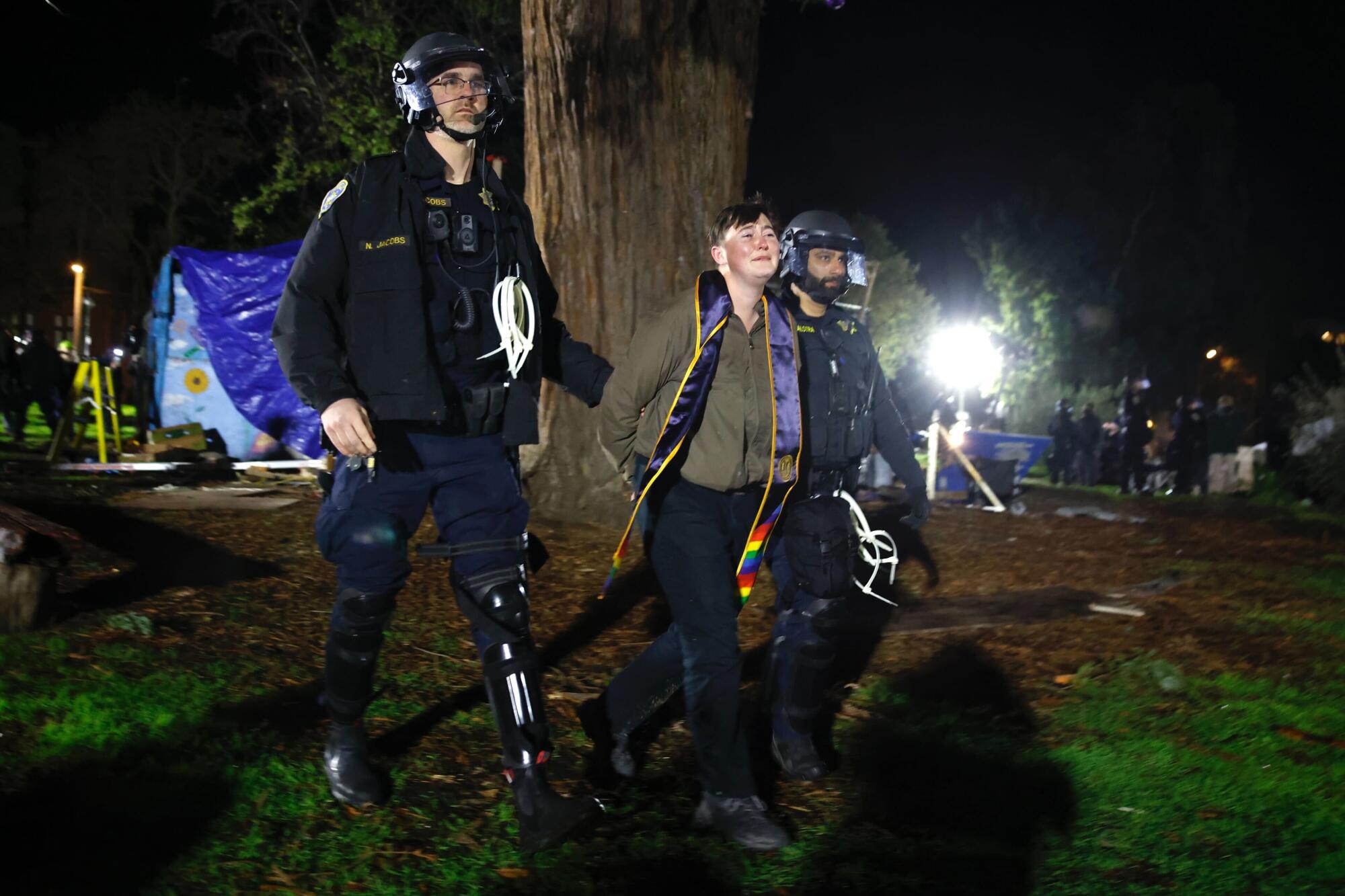
- Share via
BERKELEY — A massive contingent of law enforcement officers converged on People’s Park in the wee hours of Thursday morning, clearing the way for crews to wall off the storied green space near the UC Berkeley campus in preparation for construction of a much-contested student housing complex.
The university launched the extraordinary operation just after midnight, deploying construction crews to erect a 17-foot-high fortification by double-stacking heavy metal cargo containers around the entire park perimeter. UC police, aided by hundreds of officers from other agencies, met only mild resistance from several dozen protesters who stood watch in the park much of the night, shouting “Long live People’s Park!” and “Fight back!”
Nicholas Alexander and a few other final holdouts climbed down from a makeshift treehouse at 3:50 a.m., marking the apparent end of resistance from inside the park. At least for now.
By starting the exercise under the cover of darkness and while most students were away on winter break, university leaders minimized the raucous and sometimes violent protests that for over half a century have bedeviled attempts by campus officials to take full control of the 2.8-acre green space. By sundown Thursday, there had been no breach of the steel fortification, which one skeptic dubbed “the New Stonehenge.”
Campus spokesman Dan Mogulof said administrators were breathing “a sigh of relief” that the operation had progressed with relative ease.
“We’re relieved that we minimized conflict and there was no violence,” Mogulof said. “Still, we regret there is a degree of disturbance for people in the immediate vicinity. That’s why we’re hurrying to get the job done.”
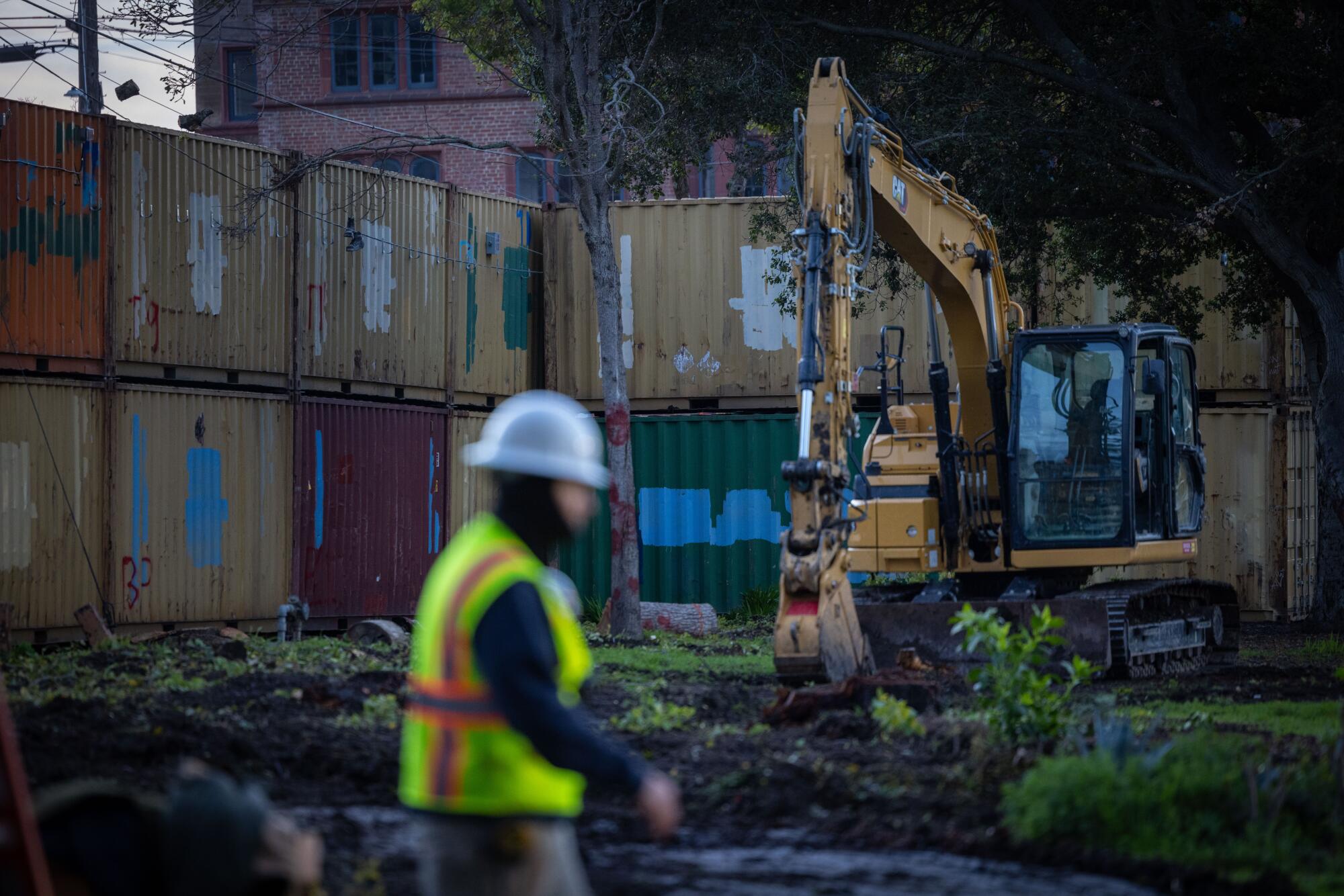
The university acknowledged that construction of the housing, ensnared in a legal dispute, cannot begin unless the state Supreme Court agrees that the Berkeley campus has completed an adequate environmental review. The proposed development would create a towering dormitory complex with space for 1,100 students in a college town with a dire shortage of affordable housing. In addition, site designs call for a separate building with permanent supportive housing for 125 homeless people. About 60% of the property would remain green space, with commemorative exhibits about the park’s history.
“Given that the existing legal issues will inevitably be resolved, we decided to take this necessary step now in order to minimize the possibility of disorder and disruption for the public and our students when we are eventually cleared to resume construction,” Chancellor Carol Christ said in a prepared statement.
Photos: Police converge on People’s Park in Berkeley to clear the way for crews to prepare the storied green space for construction of student housing.
The university said it would keep streets around the park, and at least one block to the north and east, closed for up to four days.
“Unfortunately, our planning and actions must take into account that some of the project’s opponents have previously resorted to violence and vandalism,” Christ said, adding that this was “despite strong support for the project on the part of students, community members, advocates for unhoused people, the elected leadership of the city of Berkeley, as well as the Legislature and governor of the state of California.”
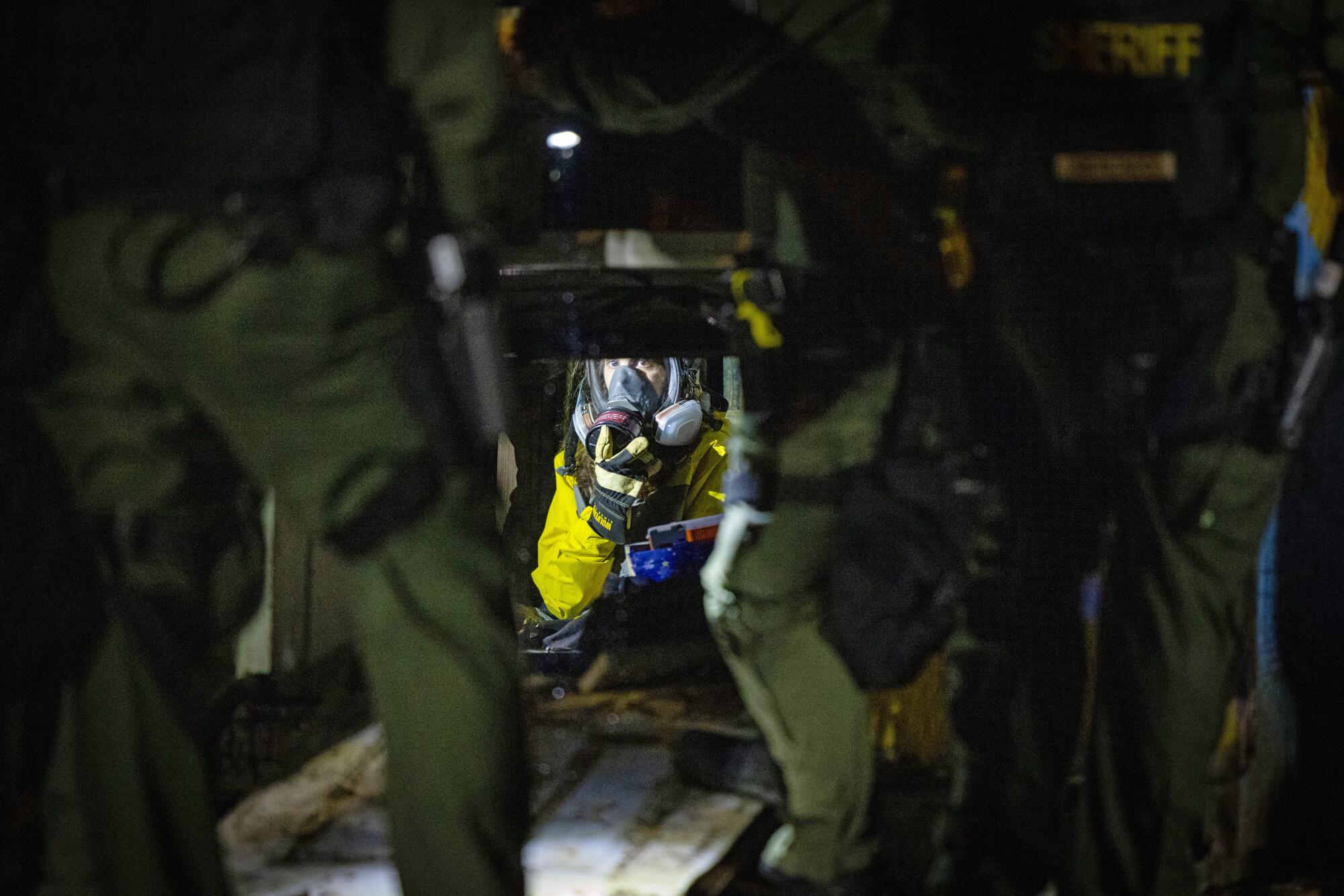
Sheriff’s deputies from Alameda and San Francisco counties joined in the operation, along with the California Highway Patrol and officers from the UC and Cal State police departments. They helped secure the perimeter around the park, which is three blocks south of the campus.
Police focused their initial efforts on a handful of protesters who had locked themselves into a makeshift wooden structure that organizers call “the kitchen.” In less than an hour, the structure had been cleared and was being dismantled. Other crews cut down trees lining the park.
Alexander said he was once homeless and had been part of a group that helped tear down a university-erected fence during a 2022 protest at the park. “This park has always helped the counterculture and the disenfranchised,” he said Wednesday evening, watching over the park with other activists, “and it’d be a shame if it was taken from us now, because where else will we go?”
But in the pre-dawn hours Thursday, he and a few other resisters agreed to leave after a promise from officers they would not be arrested.
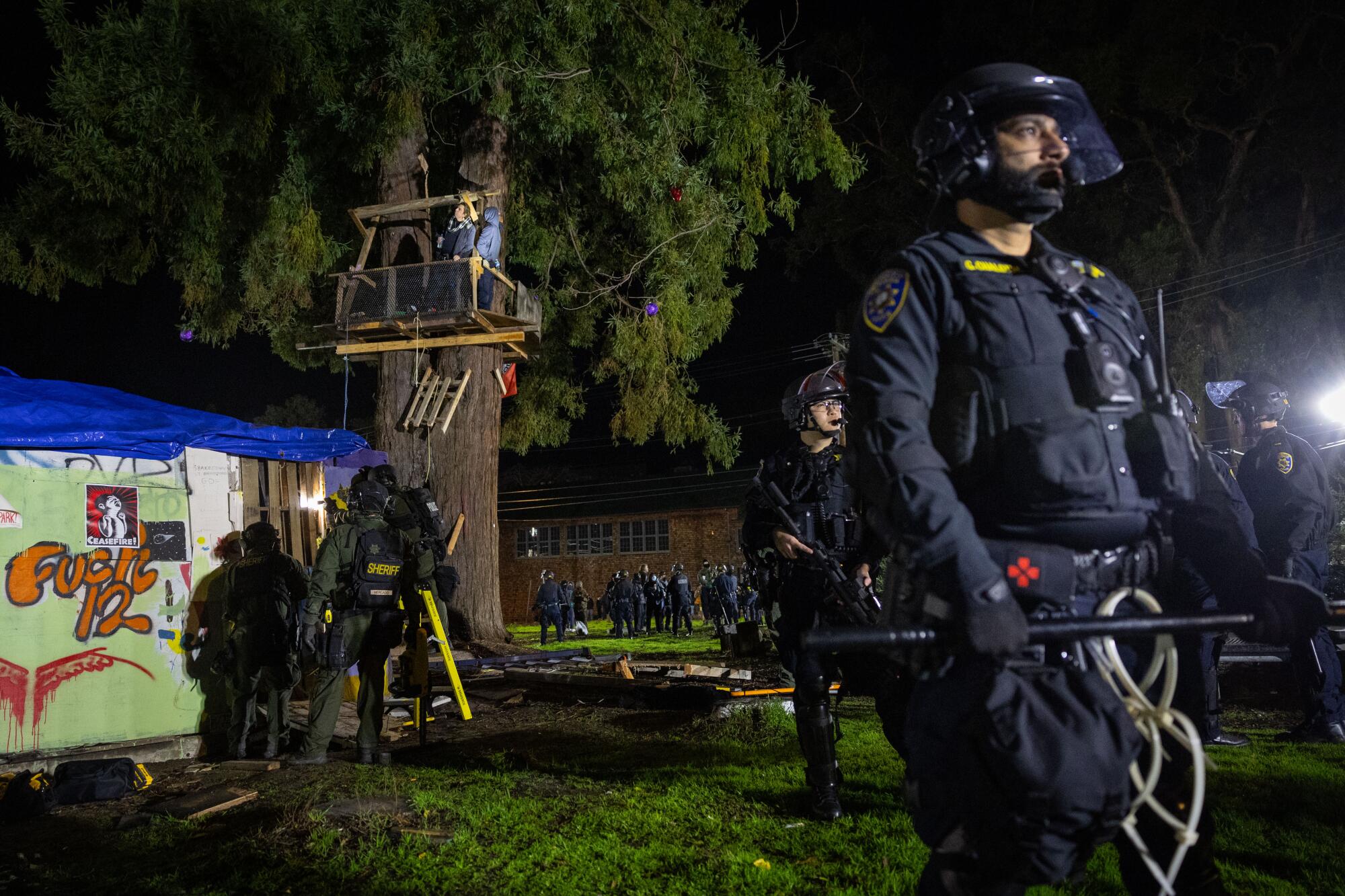
By daybreak Thursday, police had firm control of the area and work crews stacked yellow and orange cargo containers at the east end of the park, along Bowditch Street. Dozens of workers in white hazmat suits picked up hypodermic needles and other debris. The morning quiet was broken by the beep and clang of bulldozers and forklifts.
The path for the work had been cleared earlier, when cars were removed from the entire park boundary. The vehicles were towed eight blocks to a parking structure at the west end of the campus, where owners could retrieve them. They received $100 gift cards for their trouble.
A UC spokesman said police had arrested a total of seven people for trespassing as of early Thursday. They were cited and released. Berkeley police said an additional four people were arrested in skirmishes later in the day.
Park activists issued calls for an 11 a.m. rally on Telegraph Avenue, but fewer than 100 people responded. Parneet Kaur, a junior business major, said it had been “a disingenuous thing” for campus authorities to mount the operation during the winter break when most students were “physically unable to participate and give their opinion.”
But for many students, the need for affordable housing loomed larger than nostalgia for the park. On campus, many interviewed seemed uninterested in the episode unfolding just blocks away. And by late Thursday afternoon, the park had been almost entirely surrounded by the new layer of steel armor.
Activists were tipped off days in advance that the university would try to cordon off the park while students were on break. They called the incursion by law enforcement and work crews an “attack” that would destroy a legacy to people-powered activism.
“It’s about a place where people who don’t own any land can have a little piece of it, a piece that you can grow things on, that you can have sunshine on, that you can meet your friends on,” said Sylvia Tree, 25. “There’s nobody who controls it. There’s nobody who’s selling you something.”
Litigation blocking student housing projects, a potential delay in state funding and escalating construction costs are among the challenges.
Such passionate advocacy has become a perennial rite at the small patch of green squeezed between free-wheeling Telegraph Avenue and the apartments, dormitories and homes that stretch toward the Berkeley Hills.
It began more than half a century ago, in 1969, when hundreds of students and community activists dragged sod, trees and flowers to the lot and proclaimed it People’s Park. The university said it wanted to develop at least a portion of the land and soon erected a fence.
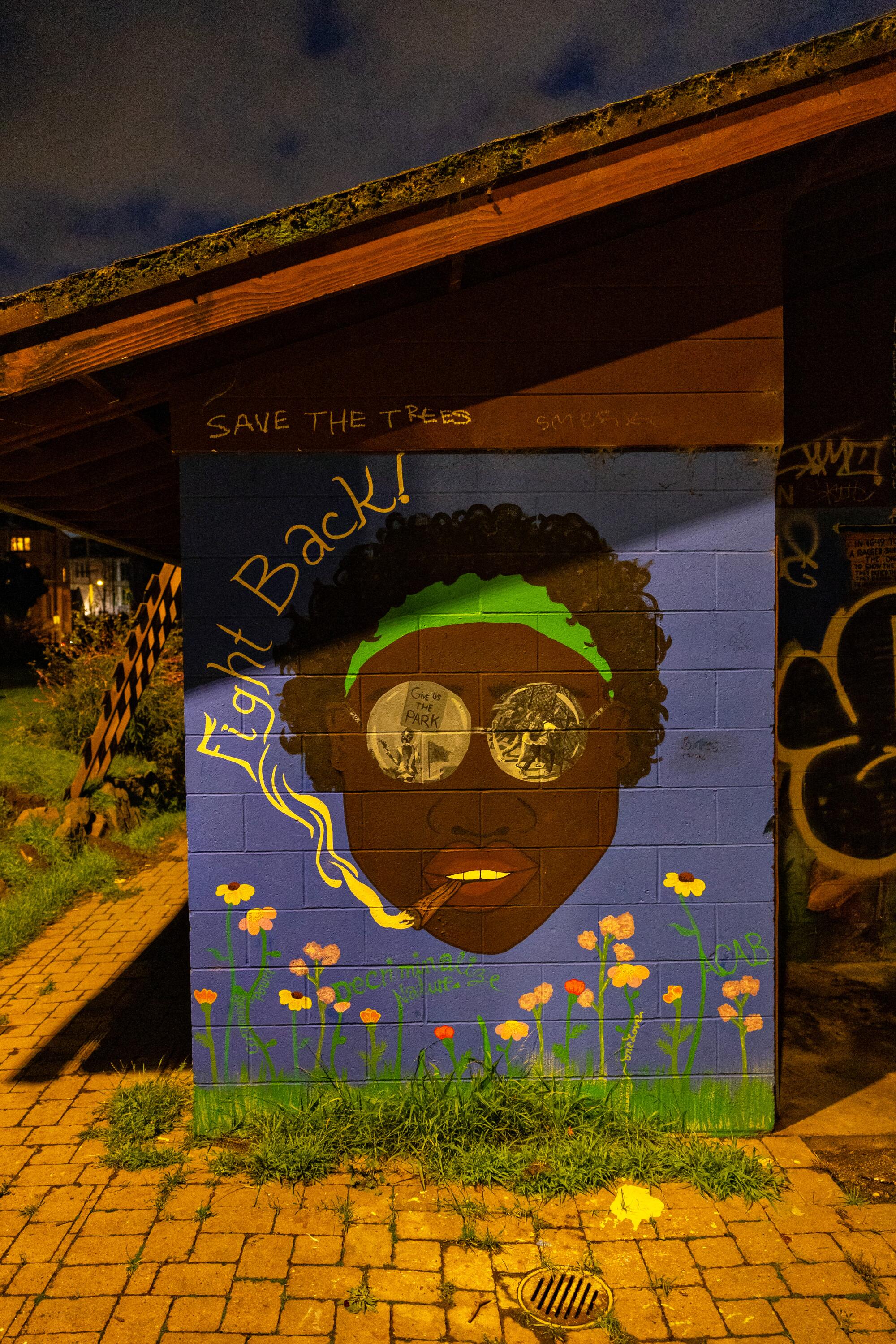
The student body’s president-elect, Dan Siegel, then urged a crowd on campus to “take back the park.” More than 6,000 people marched down Telegraph, where they were confronted by law enforcement. In the clash that followed, one man died and scores were injured.
In the decades since, the university has made repeated efforts to reclaim the property, once attempting to construct a pay parking lot on the edge of the park, where parking had been free. A new generation of demonstrators arrived, with shovels and picks, to uproot the asphalt and restore plant life.
In the early 1990s, a machete-wielding activist infuriated by the university’s construction of volleyball courts at the park was shot and killed by police after she broke into the campus residence of then-Chancellor Chang-Lin Tien. Police said they found a note in the teenager’s bag. It read: “We are willing to die for this piece of land. Are you?”
The push for the university to develop the property gained new life after Christ became chancellor in 2017 amid a student housing crisis. With Berkeley providing housing to a lower percentage of its students than any other UC campus, Christ promised to double the number of beds within a decade. She made it clear that she considered People’s Park — long a “third rail” that campus leaders avoided — a good location for a new dormitory.
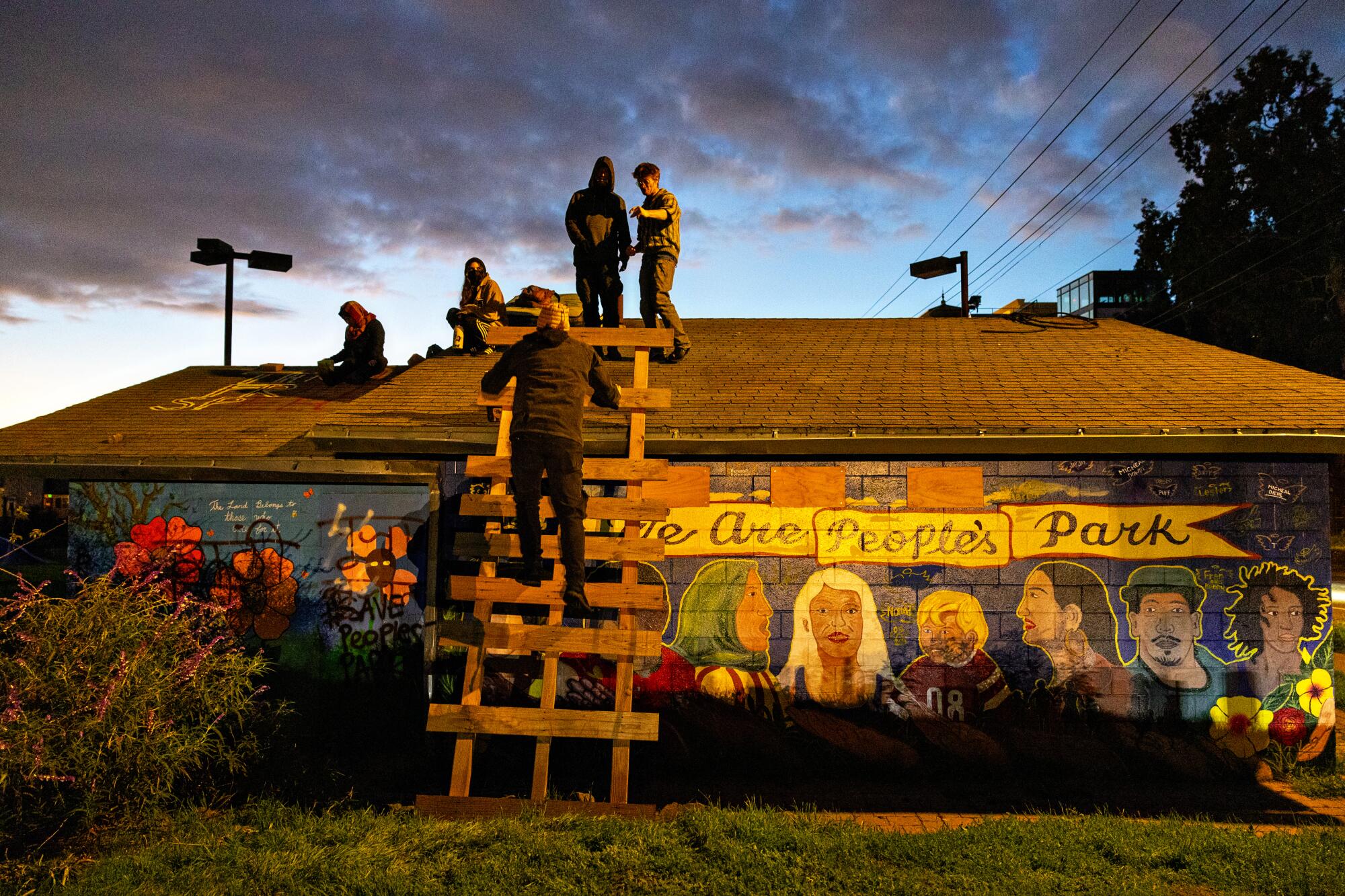
Opponents of the housing development contend that UC Berkeley has not done enough to study alternative sites. Their cause got a boost in December, when a unit of the National Trust for Historic Preservation wrote a letter calling for “exploring all possible opportunities” for preservation of the park.
The university counters that its plan does acknowledge the historic nature of the park while also trying to resolve problems that have plagued the site and nearby streets in recent years, including homeless encampments, open drug use, petty theft and violence. Parents repeatedly have complained that the unkempt and sometimes dangerous space has been allowed to exist just a block away from a Haste Avenue dorm complex.
The university released results of a survey in 2021 that showed students favor the project by 56% to 31%. More recently, in an effort to address complaints that the proposed development would displace homeless people living in the park, the university brought in a full-time social worker and said most park denizens had been relocated to a Quality Inn and offered support services.
But the long-delayed construction project suffered a setback last year when a state appellate court ruled that UC had not properly complied with the California Environmental Quality Act, a decades-old law known as CEQA, which requires state and local governments to consider the environmental impacts of certain construction and housing projects. The court found the university had not properly addressed the issue of noise — specifically the noise generated by students who might drink and hold “unruly parties,” as some neighbors asserted in documents submitted to the court.
The court also ruled that the campus had not properly justified its decision not to consider alternative locations for the housing development. UC attorneys have said that because the project’s aim is to repurpose the park, no alternative would suffice.
The university appealed the legal ruling to the state Supreme Court and also turned to the Legislature. Lawmakers passed a law, signed by Gov. Gavin Newsom in September, designed to make it easier for universities to build housing and overcome lawsuits from residents who raise noise concerns.
All parties in the dispute are awaiting a decision by the high court, and the new law presumably will factor into its deliberations.
The last concerted effort by UC to cordon off the park for construction came in August 2022. Just hours after an Alameda County judge issued a tentative ruling that the university could begin clearing the park, construction crews moved into place. But the 2 a.m. operation soon drew protesters who confronted the crews, toppling a chain-link fence and streaming into the park, where they were tackled by CHP officers. The university ended the standoff by suspending its effort to take control of the park.
The redevelopment plan has received support from much of the Berkeley City Council and Mayor Jesse Arreguin. Before the start of Thursday’s operation, Councilman Rigel Robinson issued a statement calling himself “proud” for “advancing a new vision for the storied site.” In his own statement, Arreguin called the project “deeply reflective of the city’s and university’s values.”
Times staff photographer Jason Armond contributed to this report.
More to Read
Sign up for Essential California
The most important California stories and recommendations in your inbox every morning.
You may occasionally receive promotional content from the Los Angeles Times.
